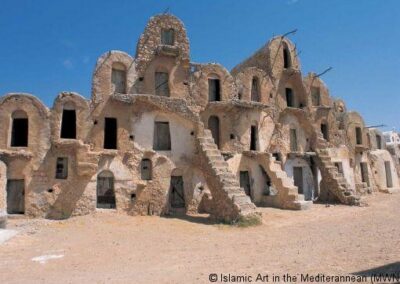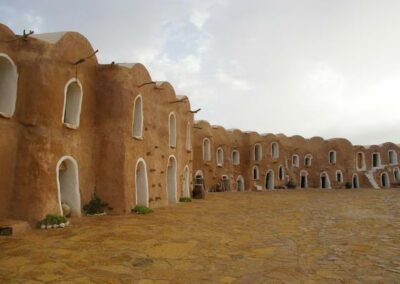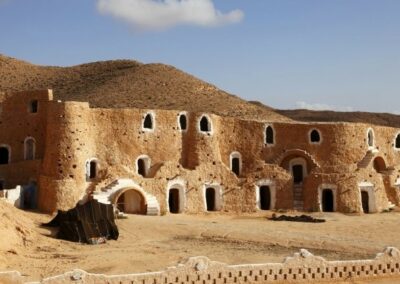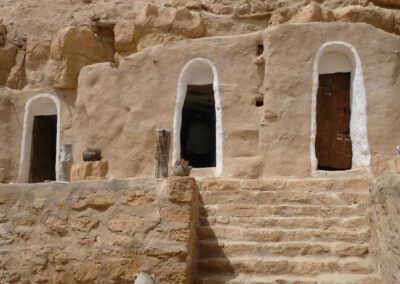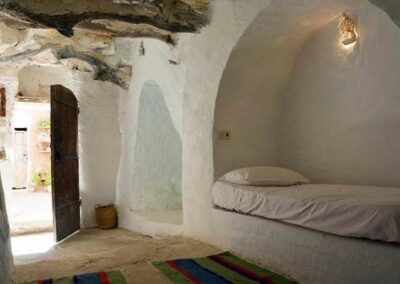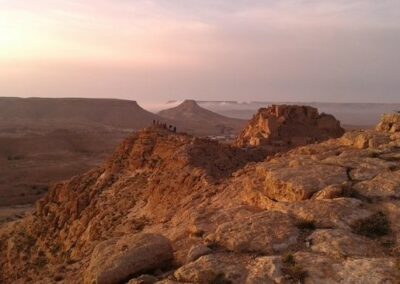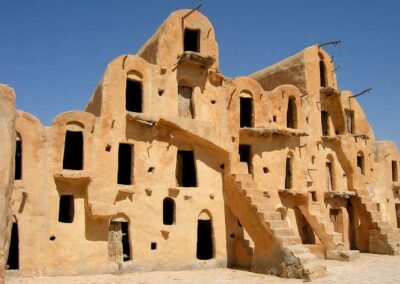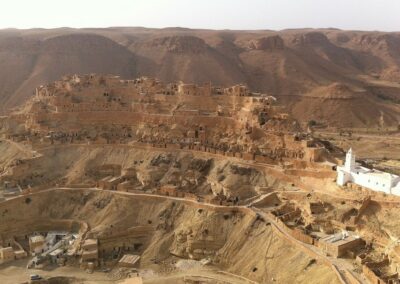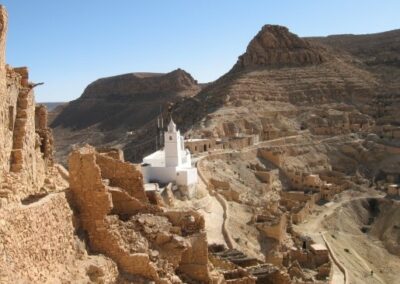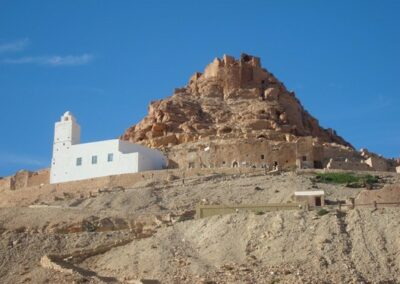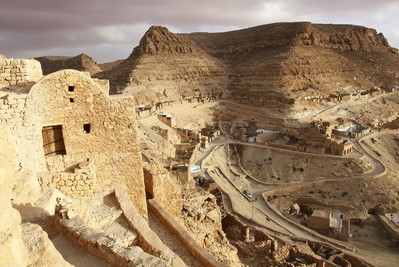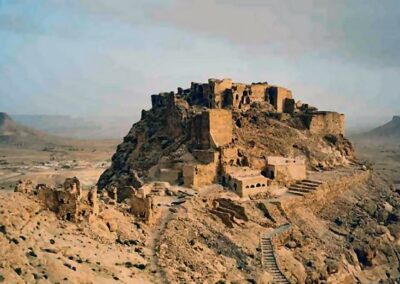Social-economic valorisation of traditional residential units and the rehabilitation of agricultural techniques
The project has planned and carried out an environmental and infra-structural rehabilitation of a section of the sixteenth-hundred Berber village of Douiret (Government of Tataouine) in the Tunisian Sahara, between Libya and Algeria, almost totally abandoned.
The ancient village became depopulated around the 60s following a modernization politics that made the population move into a new village. The ruins of the Kalaa (fortress) and of the most ancient buildings -among which the surrounding great walls- can still be found in the area. The state of abandon and the lack of ordinary maintenance, together with the severe weather conditions contributed to the urban decay of the old core of Douiret. The Associazione Giovanni Secco Suardo has been appointed by the organisation “Ricerca e Cooperazione” to plan and carry out conservation and restoration architectonic interventions. The architectural restoring, increase of agricultural production and of local handicraft made the connection between development and existant social and cultural heritage possible.
The actions, aimed to the architectural renovation of Douiret, were realised by the Associazione Giovanni Secco Suardo under the direction of Prof. Walter Barbero of Politecnico di Milano and developed in two steps: in the first phase the aim was getting to know the sites though architectural measurements, historic researches and monitoring of the state of deterioration.
The interventions relating to the architectural recovery of Douiret, carried out byAssociazione Giovanni Secco Suardo under the direction of Prof. Walter Barbero of Politecnico di Milano and developed in two steps: in the first phase the aim was getting to know the sites though architectural measurements, historic researches and monitoring of the state of deterioration.The second phase was characterised by the renovation of some abandoned buildings, using traditional construction and production material techniques and local workers.
It was important to define the purposes and destinations of use of the recovered buildings:
an ethnographic museum and a hosting house for travellers were opened in the buildings object of the project action.They are run by the locals to make the historical heritage exploited in the form of cultural tourism, in the respects of the integrity and the identity of the place.
Promoter:
Associazione Giovanni Secco Suardo – Ricerca e Cooperazione
Participating organizations and supporters:
European Commission DG VIII
Associazione Giovanni Secco Suardo
ASNAPED Association pour la Sauvegarde de la Nature et de la Protection de l’Environnement de Douiret
Gouvernment de Tataouine

